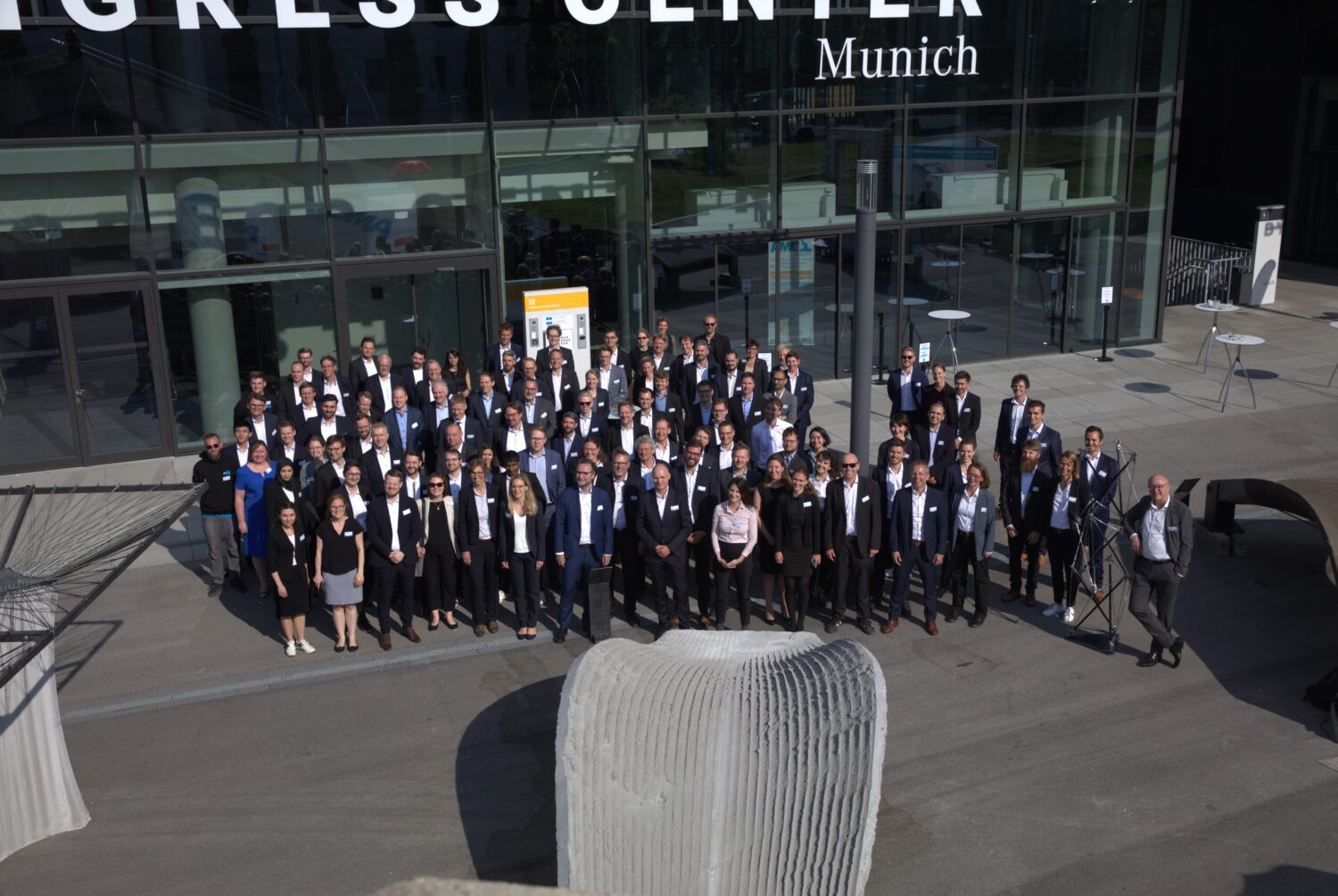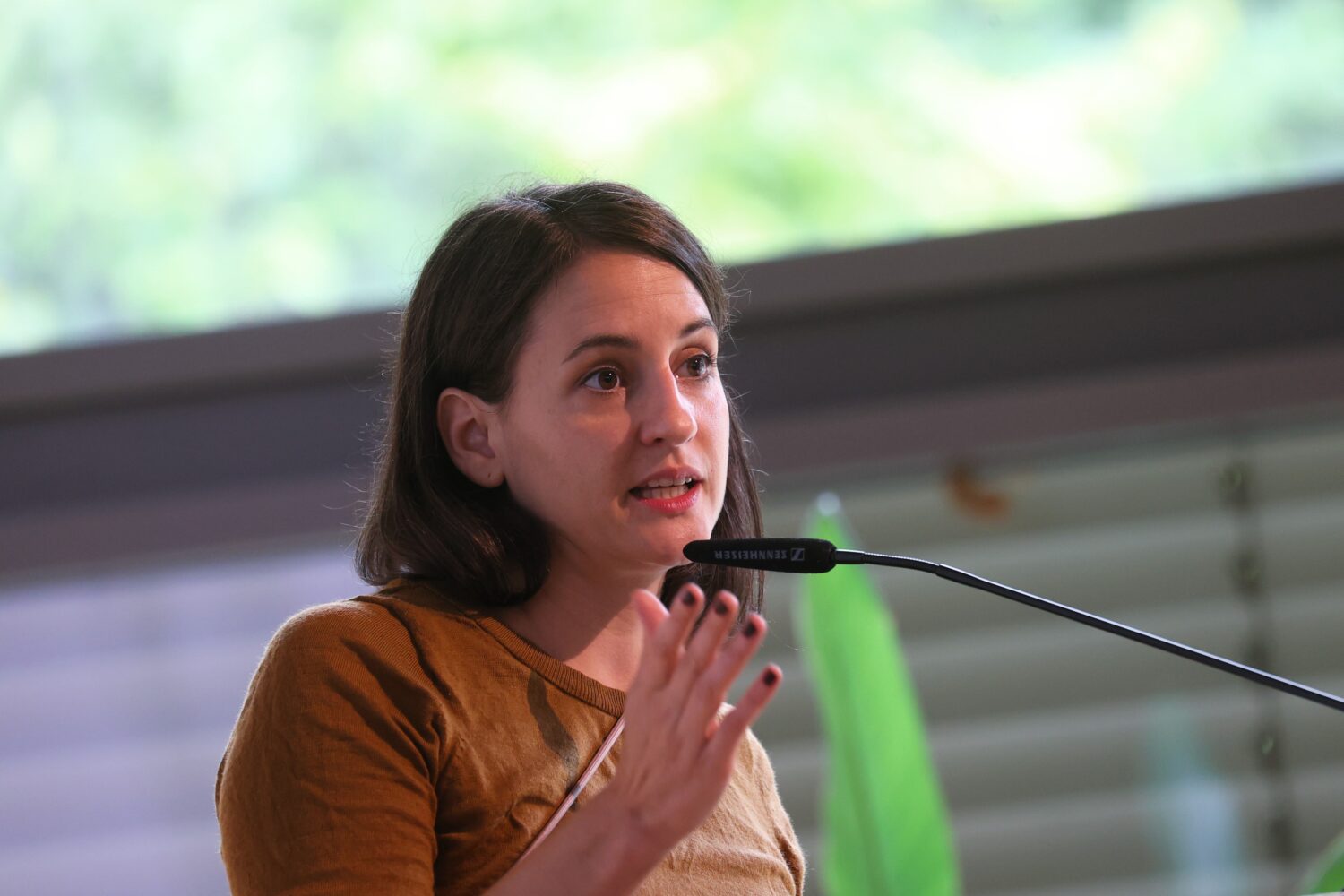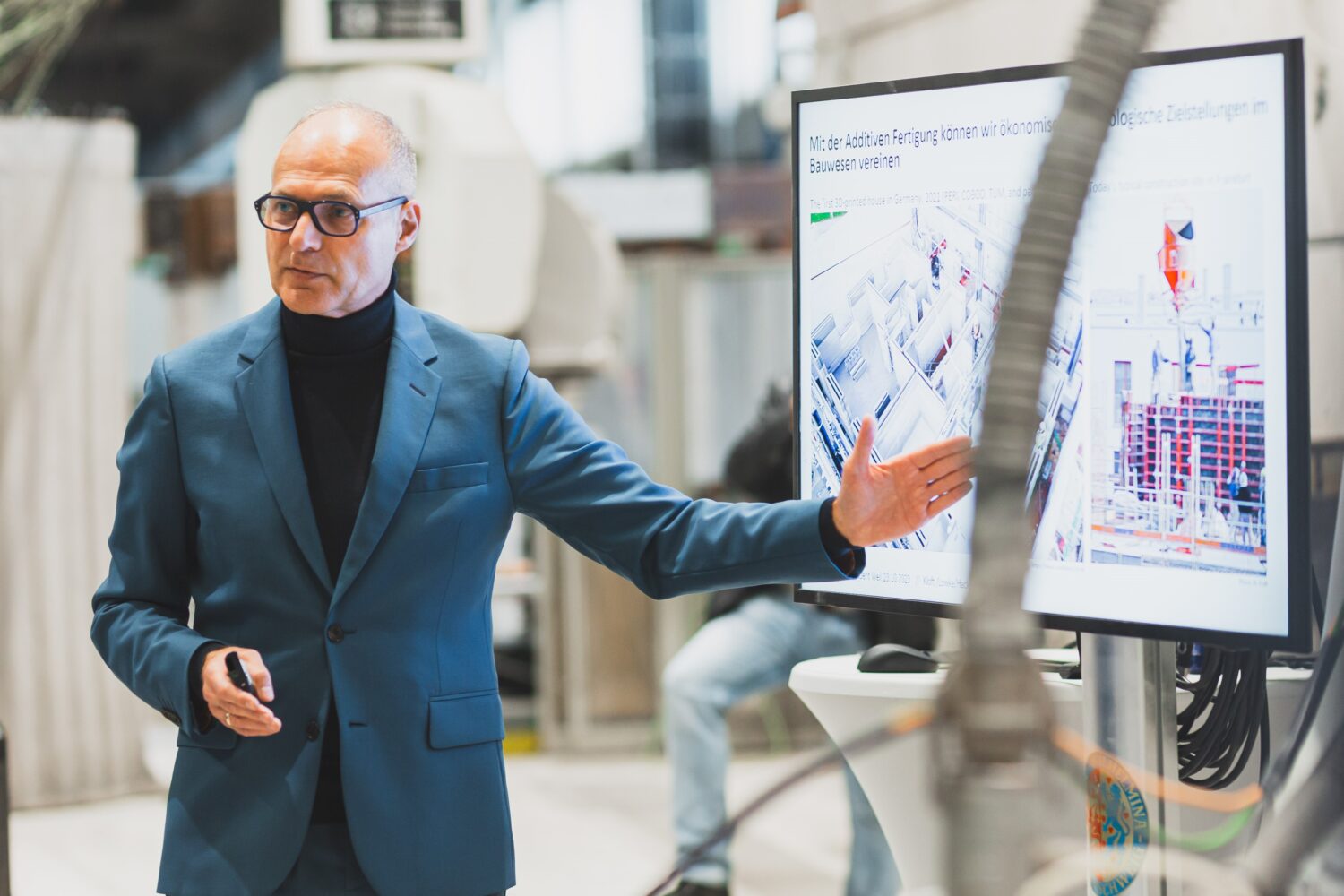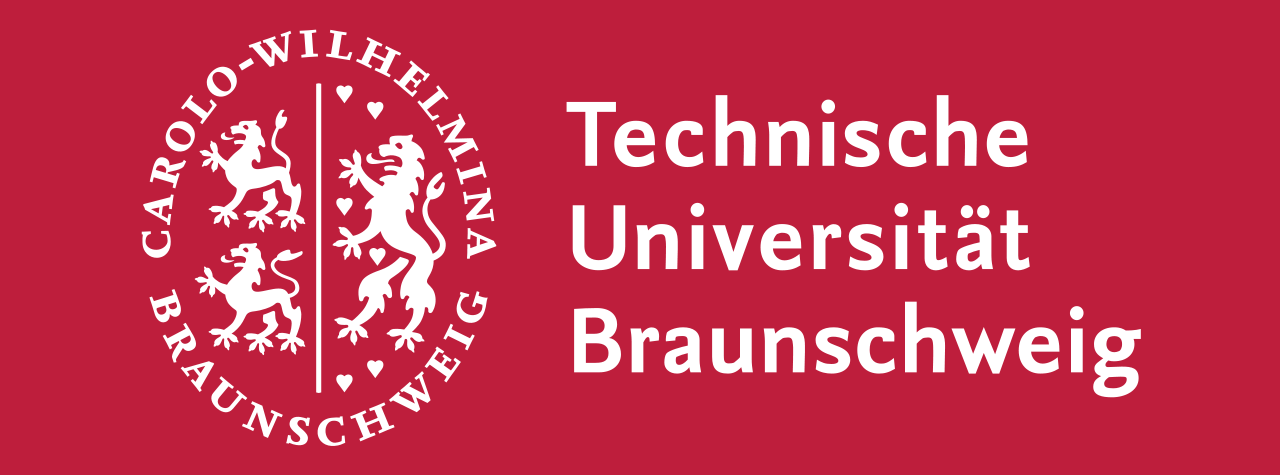A New Era for Sustainable Construction
AMC Enters Second Funding Phase
- The collaborative project “Additive Manufacturing in Construction” (AMC), explores new perspectives for the construction industry.
- Research on 3D printing in construction at the Technical University of Braunschweig and the Technical University of Munich receives four more years of funding from the German Research Foundation (DFG).
- 3D printing methods for building with clay and flood protection
Challenges in Traditional Construction:
Conventional construction processes are characterized by inefficient material usage, high environmental impact, and stagnant productivity. With a growing global population and an increasing demand for housing, the construction industry is reaching its limits. Faced with these challenges and the global significance of the construction sector as a major contributor to CO2 emissions with substantial resource consumption, the question for the future is central: How can we create more housing and infrastructure with less material and lower emissions?
This is what the Collaborative Research Centre TRR 277 “Additive Manufacturing in Construction” (AMC) at TU Braunschweig and TU Munich is researching. The German Research Foundation has now extended funding for the research network on 3D printing in construction.
Rethinking construction
“The continuation of the DFG-funded Collaborative Research Centre on 3D printing in construction marks a significant step towards an innovative and sustainable future for the construction industry,” says Angela Ittel, President of TU Braunschweig. “The research group sets standards for excellence in construction technology and is actively shaping the transformation of the construction industry through advanced 3D printing technologies. The ongoing cooperation between the two universities not only successfully deepens transregional, interdisciplinary research, but also promotes the transfer of knowledge and technology.”
“3D printing, also known as additive manufacturing, is the key digital technology for the construction sector. This technology not only enables the layer-by-layer construction of components in three-dimensional form as with conventional 3D printing, but also seamlessly integrates material and manufacturing process. This means that we are rethinking construction: which material can be used to produce which component most effectively using which 3D printing process? Digitally controlled additive manufacturing processes thus open up new productive and environmentally friendly construction methods for the construction industry,” explains Professor Harald Kloft, spokesperson for the Collaborative Research Centre.
The chance for a large impact
In the first four years of the research network, the scientists have created the conditions for applying additive manufacturing on a large scale in the construction industry – such as research into various 3D printing technologies, ways of integrating the reinforcement or integrating 3D printing into the construction process chain. In the second funding period, subtitled “The opportunity of large impact”, the research programme will be expanded. In concrete construction in particular, the future task is to reduce component masses and produce the necessary binding agents, which turn concrete into concrete in the first place, with low energy consumption and emissions. Clay as an earth-based material with innovative robotic processes is also included in the research programme. These processes offer new possibilities, for example in landscape infrastructure construction, such as flood protection. In one sub-project, the researchers want to quantify the ecological aspect of additive manufacturing in particular and optimise it using analytical life cycle assessment methods.
“Additive manufacturing is a scalable technology with global impact potential that enables more efficient, sustainable and customised buildings. Our sub-projects are methodologically very strongly characterised by experimentation and require highly interdisciplinary collaboration between our scientists from civil engineering, architecture and mechanical engineering,” says co-spokesperson Kathrin Dörfler.
The research results of Transregio 277 AMC have the potential to fundamentally change the construction industry. The aim is to use 3D printing technologies to combine the requirements of economy and ecology and make construction more productive, environmentally friendly and affordable.
Braunschweig, 24th November 2023
About TRR 277 AMC:
The Collaborative Research Center TRR 277 Additive Manufacturing in Construction (AMC) is dedicated to advancing research in the field of construction, with a focus on leveraging 3D printing technology to revolutionize sustainable and energy-efficient building practices. Through innovation and collaboration, the center aims to usher in a new era for the construction industry. In the interdisciplinary, cross-location and dfg-funded research project, the two universities TU Braunschweig and TU Munich, pursue the novel manufacturing approach for the construction industry. Additive manufacturing can develop into a key technology for the digitalization of the construction industry. Complex research questions on materials, process engineering, control, modeling, design and construction are being investigated holistically by scientists from the fields of civil and mechanical engineering.
Contact:
Meike Bährens M.A.
PR & Communication Coordinator
Tel.: +49 531 391-3579 | Mobil: +49 171 389 5358
E-Mail: m.baehrens@tu-braunschweig.de | www.amc-trr277.de
https://www.linkedin.com/company/amc-trr277/
https://www.instagram.com/additivemanufacturing_trr277/

Board of the Collaborative Research Centre (from left to right: Christoph Gehlen, Harald Kloft, Annika Raatz, Norman Hack, Klaudius Henke, Kathrin Dörfler and Dirk Lowke) Credit: TRR 277 AMC, Cecilia Ahumada
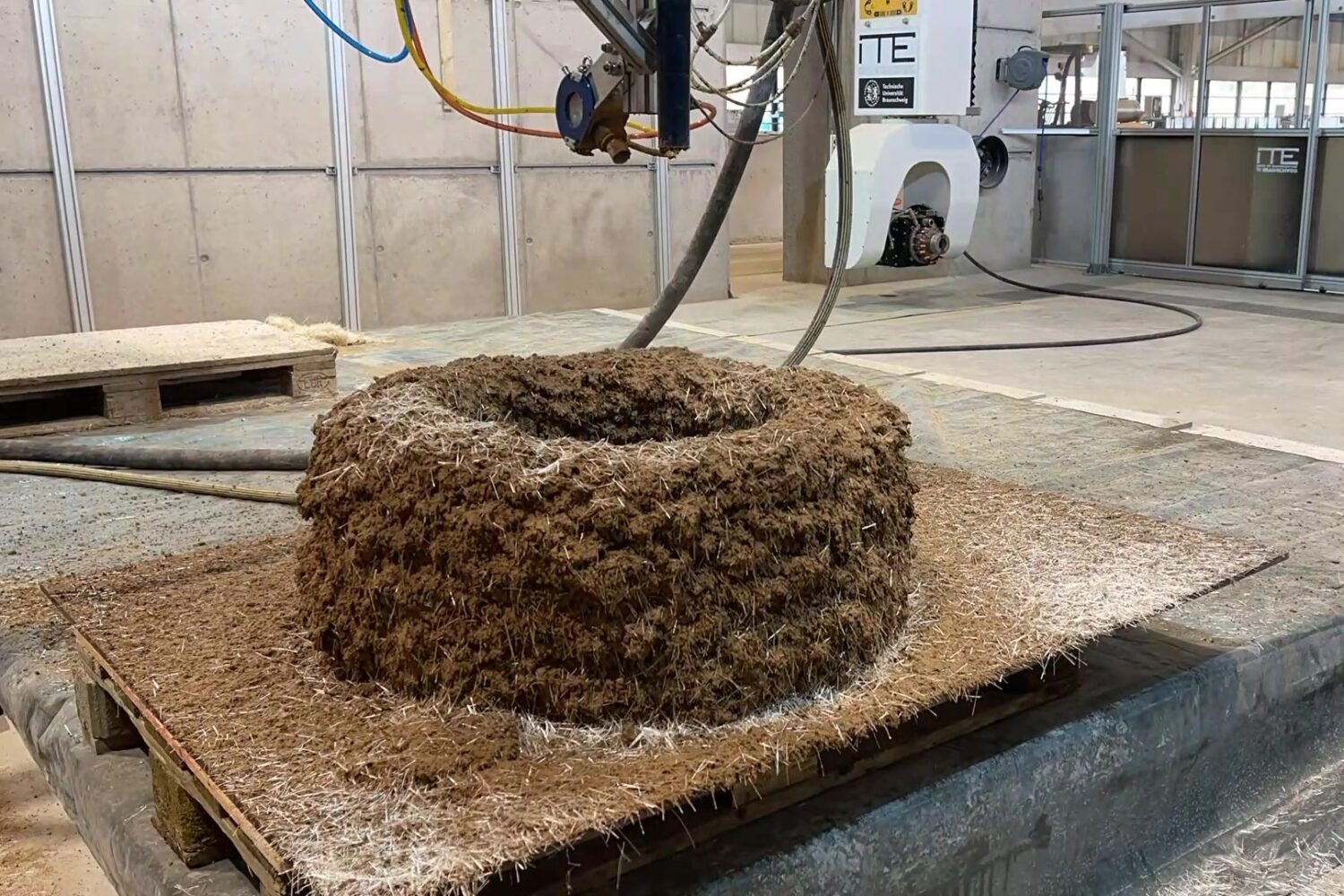
Earth-based material (clay) is turned into a component using a robotic process (Sprayed Earth Additive Manufacturing /SEAM). Credit: TRR 277 AMC, Joschua Gosslar

Digital production of reinforced concrete components in a combined process of shotcrete 3D printing (SC3DP) and precise surface machining by CNC milling, Credit: TRR 277 AMC, Janna Vollrath

